 Just as Disney replaced Fairy Tale books with their movies, those movies got replaced with video games as a number of game developers published games based on fairy tales. I bring you a list of such games, which are not exactly myth based (like God of War or Skyrim), rather, those which reminds you of the fairy tales we heard as kids, only playable.
1. Fable: Fable introduces gamers to a breathtaking fantasy world where you can be the chivalrous hero you always wanted to be. If you prefer being more of a sinister anti-hero, the choice is up to you. The game play is fabulous and graphics is decent considering it came out way back in 2004. This brilliant RPG was developed by Microsoft Studios, and if you are done with the original and your thirst for adventure is still unquenched, then you can try out Fable 2 and Fable 3, both of which build on the original’s strengths. Platform: PC, Xbox
2. Legend of Zelda: Before the age of Play station and Xbox, we had GameBoy and those who had GameBoy had at least one of the Legend of Zelda games. The plot generally is about a friend-zoned kid Link, whose main goal in life seems to be to save Princess Zelda, who has a habit of being kidnapped way too many times. The game is a bit mainstream but fun to play. The latest game of the series, Legend of Zelda: Skyward Sword came out in November 2011 and the franchise won the first video game Hall of Fame Award in the Spike Video Game Awards. Platform: Game Boy and all Nintendo Platforms.
3. Castlevania: Konami was one of the first developers who used non-sparkling vampires as antagonists before it was cool and then every franchise started using them. Gameplay of Castlevania is fluid and has a wide array of enemies of every category you can think of. With over 30 games in the series and being available in almost every platform, the series will give you the ultimate fantasy adventure. Platform: PC, Xbox, Play station, Game Boy, Nintendo consoles and Arcade.
4. Fairytale Fights: Who says fairy tale characters cannot be Hack-and-Slash loving psychotic beings? Well story books do, but you’ll have a whole different bunch of fairy tale characters in Play Logic Entertainment’s game Fairytale Fights. You can choose the wolf hunting Red Riding Hood, crazy Snow White, the naked King or the Giant killing Jack and then slash your way to victory. Graphics of the game is childish but gameplay is similar to any hack-and-slash, button-smashing games. Platform: PS3, Xbox360.
If you prefer old school games then you can also try out Changeling: The Lost, or Deliria: Faerie tales for a New Millennium. Fair warning, though, some of these games will make you wish you actually lived in fairy tale world whereas some might ruin your childhood memories of your favorite characters forever
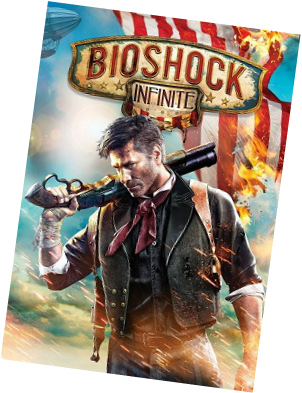 Bioshock is finally back after three years and we can safely say it was more than worth the wait. Those who played the previous installments in the Bioshock series should know this: even if you try to make direct comparisons between the two, it is clear that Infinite is an infinitely better (hah!) game than its predecessor. It moves at a better pace, than BioShock, but still carries that element of exploration and the sense of excitement that comes with a game with such a huge playable world.
Infinite’s new setting, Columbia, is just full of gorgeous architecture and stunning vistas. This game is truly a fitting goodbye to the current generation of consoles in terms of what their hardware can generate. Columbia is teeming with life and successfully convinces you that you’re in a living, breathing dystopian atmosphere. The graphics is by far the best this year, which really makes you wonder how much better the Unreal Engine can get. For console players, the graphics is certainly great, but next to the sheer ambition of the game, the graphics are a bit of a letdown; but in no way does it take anything away from the whole experience.
The biggest reason and probably the main feature that will leave your mind blown is the story in Bioshock, which cannot be praised enough. The original Bioshock was known for its great twists but without spoiling much, you can be assured that you’ll never see the twist coming and when it does, you’ll remember it for a long time to come. Not often does a game come out that manages to tell such a captivating story with such a cast of deeply fleshed out characters. This time the story revolves around Booker DeWitt, a disgraced agent, the man in the spotlight, who is tasked with bringing in Elizabeth (who tags along with you for the whole of the game and is a central character both in terms of gameplay and story) to settle a debt. The character of Elizabeth is so well defined that you cannot help but develop a feeling of deep connection with her over the course of the game.
The name BioShock always takes you back to the infamous fights with the Big Daddies and Big Sisters, but Infinite does away with these series staples, instead introducing the Songbird: a gigantic robo-fowl who serves up more than a challenge and leaves you craving more. The gameplay mechanic is mostly what it was and the Vigors – identical to Plasmids – offer you their unique powers to satiate your bloodlust. With the variety of guns, combat never feels repetitive if you keep changing your weapon combos. The new tool in Infinite, the Skyhook, offers gruesome execution moves and creative mobility around the open world of Infinite, allowing you to have high-speed gunfights whizzing around in the sky.
This game signals the definitive end to the Xbox360 and PS3 era. It is an absolutely outstanding game, a new benchmark for game developers to strive for. Do not hesitate in buying this game. This game is pure art.
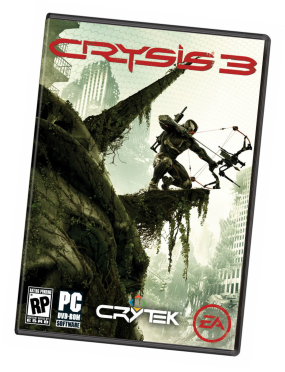 Nowadays, with all the hype with so many different FPS games, it’s hard to find one that has as great a feel as Crysis does. The latest installment in the Crysis series brings the tough-love-for-machines story line up to full fruition, as it is set twenty years after the events of Crysis 2. By now, the alien Alpha Ceph has pretty much taken over the world and corrupt human organization Cell has control of what remains of New York. While they fight over suburban New York-turned-jungle, protagonist and only nanosuit wielding hero Prophet teams up with old friend Psycho to bring peace and end things once and for all. You know, the usual.
While being a little stale and short, the storyline proves to be satisfactory and what anyone would expect from a Crysis installment. What was even more expected and perfectly delivered from the Crytek game engine is the cutting-edge graphics and superb gameplay. The moment Liberty Dome comes into view, and New York is shown for what it is 20 years later, it’s hard not to put down your controller/keyboard, sit back and enjoy the breathtaking view that unfolds before you. While holding on to the jungle elements of the first game, and combining them with the rubble and destruction of New York City and its infrastructure from the second game, the third is a smooth and cohesive mix of both, as New York is turned into a war-zone between super creepy alien scum and super creepy human scum organization.
The nanosuit still features the same abilities as before, giving the players power to cloak, harden to armour, become lighting fast and basically feel like a walking tank. A new addition however, is the hi-tech hunter bow that allows the nanosuit to stay invisible while shooting one-shot-kill arrows. Some arrows can gut your enemies dead and stick them to the walls, or electrify them, some even carry explosives. Even with a wide range of modifiable and indefinitely powerful weapons and artillery, the predator bow is the weapon you’ll fall for the fastest. The suit, now integrated with Alien mechanism, can also handle alien technology better than before; and with a much more user-friendly suit, players have the ability to modify according to the environment. The interface where you modify the suit and weapons is easily accessible. In fact, the interface has as little friction as possible, making it easier to employ a real soldier’s instincts and apply changes accordingly.
The post-apocalyptic nature of the entire game, the ability to manipulate a super suit to acclimatize to almost any threat or environment, and the whole thing where there are powerful and ruthless aliens crawling all over the place gives the player the “hunter” feel that the game promised. However, the game is short, and even though a few bursts of bullets makes you replay the previous checkpoint, the game is incessantly easy all throughout.
What made Crysis 3 different from the rest of the FPS games, was that in being such a hard-action-packed game, where the main initiative from start to finish has been kill, destroy and contain, the game manages to bring up an emotional atmosphere. The sadness in Pyscho’s eyes as he retells his story about being tortured and skinned out of his suit is nothing compared to the hatred and stink you feel when Pyscho accuses Prophet of being nothing more than a piece of technology. The tense dialogue makes it hard not to be thrown into the middle of the verbal onslaught that accompanies most of the game, and the emotional factor, makes it even more real.
The multiplayer mode has been deemed better than that of the previous installment, and definitely worth a shot. One should get comfort from the fact that the game finally brings the story to a close and not a bad one at that too. From being able to see every blade of grass as it’s trampled by an oncoming scout alien team, from listening to the rapid breathing of enemies and the arrows hitting the targets with murderous appeal, and for bringing an end to a great story, Crysis 3 is easily the first blockbuster game of the year.
 In 1968, visionary director Stanley Kubrick made 2001: A Space Odyssey, breaking the boundaries of the visuals that were possible given the technology of that time.
Eleven years later, another forward thinker, Ridley Scott (who makes no secret about being a Kubrick fan) made Alien, which crossed over from science-fiction thriller to horror territory, creating not just the creepiest extra-terrestrial ever, but a whole new template for movie buffs and film makers to geek out over.
If you've watched and liked these two movies, this should be a cakewalk.
Synopsis
Close to the beginning of Earth's history, a strange humanoid giant stands at the mouth of a waterfall and commits some seriously messed up suicide by drinking some sort of germy substance. His disintegrating body falls into the water, and a few surviving strands of DNA give way to the fancy opening credits.
Cut to the 2080's - a jump that rivals the flash forward in Kubrick's 2001 - where two scientists Charlie Holloway (Logan Marshall-Green) and Elizabeth Shaw (Noomi Rapace) discover some ancient cave paintings that point them towards the stars in the search for answers to life's big question.
One last fast-forward to 2093, and the same scientists are on board the starship Prometheus. Along with the crew are Meredith Vickers (Charlize Theron), a representative of the private company that sponsored the trip, and David (Michael Fassbender), the world's first perfect android. They soon arrive on the planet indicated by the star system in the cave paintings, a place with a curiously Earth-like environment, and with what appears to be a massive tomb. And that's when everything goes horribly wrong.
The good:
It's hard to say much about the pros and cons of this movie without giving away spoilers, but even if you've just seen the trailers, you can tell that the visuals rock. This is one of the few movies where the use of 3D is actually justified. Ridley Scott has created a visual feast that manages to capture the larger-than-life canvas and themes of the story. The casting has also been perfect, with each actor delivering just what the role demanded of them.
Noomi Rapace brings her trademark toughness, Charlize Theron is sexy and sinister, and Michael Fassbender is impeccable as always. The plot avoids entering cheesy territory by providing a cutesy explanation for the larger questions, and although it echoes the developments in 2001: A Space Odyssey, it emerges from it with a hopeful, rather than a bleak outlook about humanity. There are also plenty of subtle references that will keep the film geeks and theorists busy.
The bad:
The movie has way too much going on for the casual viewer to keep track of, and there's more subtext than actual action, which is what elicited complaints about the 'holes' in the plot. The film demands active engagement, and you'll have to do some work connecting the dots, or leave feeling unsatisfied. While the two lead characters played off each other very well, the secondary characters could have been better fleshed out. The biggest flaw, however, is the pacing. With so much to pack into such a short amount of time, you get the feeling of being rushed along instead of being allowed to savour it. This further adds to the sentiment about plot-holes and cardboard characters.
Verdict:
As mentioned above, if you liked 2001 and Alien, you'll enjoy this. The good mostly outweighs the bad - for the serious viewer. If you prefer something easier on the synapses and packed with decent visuals and action, you're better off watching something else, like The Avengers.
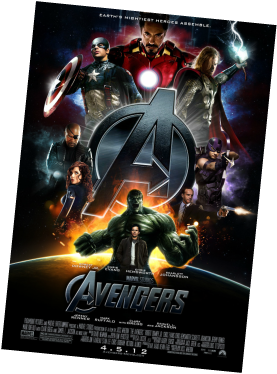 Over the last few years, Marvel has released one superhero blockbuster after another and if viewed correctly, all those movies, be it the Iron Man movies or the Captain America flick last year, were just overlong trailers that came to a head in The Avengers. Now, before we go into the review, one simple fact about the movie must be made clear: Joss Whedon. The Geek Who Made It Big. The Avengers, in many respect, works because it was made by someone who grew up dreaming about The Avengers in the wee hours of the night. And it shows in the movie.
Whedon's credentials, ranging from Buffy to Firefly all in some respect help in shaping this movie. The characterisation that made Buffy famous, the banter among disparate individuals that made Firefly amazing can all be found here.
The Avengers picks off where all those previous movies left off. We are shown how those characters, Tony Stark, Bruce Banner, Steve Rogers et al, have all been getting on with their lives after the events of their respective movies. In other ensemble movies, this is the part where a lot of writers and directors get carried away. In an effort to showcase the lives of the characters, either in a humorous or dramatic light, they take up too much of the screen time to actually do justice to the story at hand. Whedon avoids this pitfall by using dialogue more than anything else. Small visual vignettes are offered to the viewer that manage to succinctly describe whatever activity, say, Tony Stark was involved in when he wasn't encased in metal (he builds a tower, names it after himself).
Most of you by now have probably already seen the trailers and/or heard enough about the movie to know its basic storyline. Loki, villain from Thor, shows up on Earth following his estranged adopted brother. The reason behind his appearance is not simple revenge but the acquisition of a certain glowing cube called The Tesseract. Loki manages to get a hold of it and because this cube is so unnaturally powerful that the Avengers must assemble to stop him before he does all manner of heinous things.
And that is another thing that the movie has; clichés aplenty. We've all seen “oh-no-that-dude-with-the-weird-hair-is-going-to-destroy-the-world-because-he-just-can't-love movies. Every year, at least one big name director tries to come up with a newer, novel way of ending it all.
Thankfully, Whedon, if anything is aware of the clichés he's playing with and he doesn't try to artfully manoeuvre around them by adding layers of rationalisation and sophistry. He takes them, uses them and he uses them well. You have the band of superpowered individuals who can't get along, check; you have the crazy idealistic villain, check; you have the moment that brings them all together, check. They're all there except they don't feel like Legos strewn on the ground with jarring edges waiting to be stepped on.
Whedon makes the pieces fit and Downey Jr and the Hulk keep the funnies coming. Watch this movie if you like things blowing up.
Best Quote: “Dr. Banner, your work is unparalleled. And I'm a huge fan of the way you lose control and turn into an enormous green rage monster.” - Tony Stark
Interesting Fact: Samuel L. Jackson was not allowed to improvise the lines. Robert Downey Jr. was. Go figure.
Similar Movies: Those George Clooney movies about robbing people. Animated Avengers Movies. A Clockwork Orange (ensemble cast, cooperating to do uh… things).
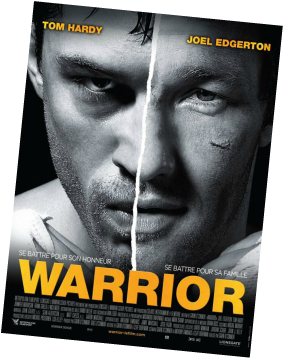 "WARRIOR” is a movie which brings together aspects of family, love and the passion for fighting into a heart-breaking masterpiece. The Academy Award nominated movie started a buzz amongst people even before its release in September 2011. The story separately portrays the lives of two brothers: Brendan Conlon (Joel Edgerton) and Tommy Conlon (Tom Hardy) fourteen years after they left their abusive alcoholic father's home.
Tommy, a reserved and bitter Marine, visits his father Paddy Conlon (Nick Nolte) to see that he had given up his past habits and converted to Christianity. Tommy seeks his help to train for the SPARTA, the biggest mixed martial arts tournament in history.
On the other side, Brendan is a high school physics teacher, married with two kids. His family was facing huge financial crisis and he decided to wrestle in a small parking-lot fight and win some money for his family. When the school heard of this, though, they suspended him and without a choice, Brendan turned to his friend, Frank, to train him for the SPARTA.
Rising actor Tom Hardy's brilliant acting as Tommy, a brawny man bulldozing his way through life is especially captivating. And Edgerton plays the more emotional older brother. These actors take their roles far beyond any stereotypes. Nolte plays the father very well and was nominated for an Academy Award for best supporting role.
The thing about this movie is that it blasts our ideas of these buffed wrestlers always being macho. It also shows all these stories in such a touching way, that you can't help but feel emotional. The movie did very well amongst critics, with 85% positive reviews.
Warrior suffers from some clichés and seems to fall under the shadow of The Fighter, its more famed counterpart. But what sets it apart is the direct rivalry between the brothers who go head to head in a caged arena.
Who will like this? Pretty much everyone, whether they enjoy wrestling or not, but can deal with some violence and darker scenes. Also, we get to see Tom Hardy in action before “Dark Knight Rises.”
If you like this, you will like:
The Fighter (2010): A biographical story about welterweight boxer Micky Ward and his rise to championship, with brilliant acting by Christian Bale as his addicted brother.
Cinderella Man (2005): Also a biographical story, based on the life of James Braddock, a washed up boxer who came back to become a champion and the inspiration of a nation during the Great Depression.
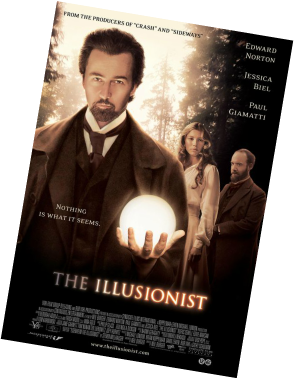 No matter what the world thinks of magic, it is a dying art. The bizarre clothes, the plump rabbits peeking out of top hats, the pretty assistants smiling as they go under the blade to get themselves cut into half; all these are parts of an extinct world. Movies are often made about these fading cultures and they always turn out to be melancholic, and The Illusionist seems no different when you hear the plot for the first time. It is not the Edward Norton movie from 2006; it's the French adaptation of the comic master Jacques Tati's screenplay.
The Illusionist (French: L'Illusionniste) is set in 1959, where the protagonist, a middle-aged vagabond magician performs his somewhat outdated tricks to a set of reluctant audience. Between his searches for jobs from one theatre to another, he gets the call to perform in a small village out in Scotland, which he enthusiastically takes. During his stint in Scotland, he meets a young urchin girl, who is still naive enough to believe that magic is real. As the magician leaves for Edinburgh, the girl follows him and he takes the role of a stand-in parent. He lets her stay with him and buys her whatever small luxury he can afford with his unpredictable income. Somewhere along the line between paying bills and imploring for jobs, the magic runs out of him, but not for the girl, and then the illusion begins.
The Illusionist is roughly like a silent movie; people don't really talk, there's music all the time and the characters speak in a jumble of languages that we can barely understand. The movie has brilliant graphics - every single scene is a piece of art, from the grey yet cheerful Scottish scenes to the whimsical hotel in Edinburgh - the world of The Illusionist is unlike anything we are used to seeing. The movie could've been depressing, but director Sylvain Chomet did his magic and it turned out to be an enchanting work, with great music and a bittersweet story.
RS verdict: 8/10
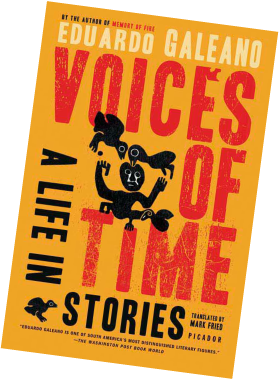 South Americans have it all, really. Beautiful football, beautiful women, amazing parties and, of course, the ability to twist words into soft caresses that whisper agelessly across time zones. In fact, we should all be asking ourselves why we aren't on a plane to Montevideo right now. If you do end up traipsing through the cobbled streets of the Uruguayan capital one day, make sure you read this book before you go.
Voices of Time is different. In fact, it’s not even what you’d call a proper novel. For your usual bibliophile, this book will be a tough challenge. No set plots, no set characters or even a set theme. What you have is 330 vignettes usually delivered over a single page, sometimes even a single paragraph. Galeano talks about all the intricate layers of our existence in short dosages of history intertwined with the poetry of our everyday lives. Starting from blue algae as life began to take shape, he takes us on a voyage through time and through the countless emotions that helped shaped the continents. One moment you are in the hovels of Rio wading past the grime, the next you are in the arena of politics, casually glancing over the casualties of war. There is a singular uniqueness in the idea of the book. The only thing that comes close is Jack Kerouac’s Book of Sketches, but Voices of Time is more than just a compilation of transient thoughts. It’s embedded deeply in history and the vignettes progress quite interestingly.
On to the prose.You’d be hard-pressed to find a writer more adept at turning prose into poetry swimming with potent imagery. Maybe it’s a South American thing, because the lyrical nature of Galeano’s words is not unlike that of Marquez. Indeed, at times Galeano rambles on a lot like the harmless town drunk, nostalgically reliving all his past misadventures, hunched at the bar, long after last call is over. This book is a must read for everyone who enjoys Latin American literature. It’s something that’s affected me deeply on a personal level and I can pay it no higher tribute than the fact that I fully intend to never return it to the friend I borrowed it from.
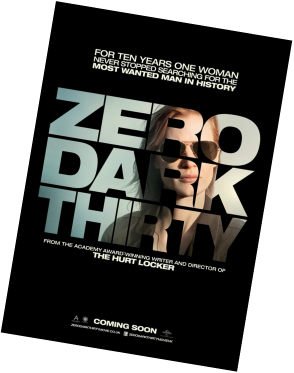 Katherin Bigelow made it big in 2009 when The Hurt Locker won Best Picture at the Academy Awards. She returns in 2012 with another Best Picture nominated feature: Zero Dark Thirty. An edge of the seat action thriller, it would be a great film even without the label that it is actually a dramatisation of real events. Zero Dark Thirty is the story of CIA operations spanning over a decade that finally resulted in the death of Osama Bin Laden.
The film centers on Maya, who is a rookie field agent at the beginning. As the film progresses in leaps, sometimes skipping years at a time, Maya becomes tougher and tougher. The transformation of the lead character is very noticeable. But this movie is not about character development. Zero Dark Thirty is a modern spy film. This is what cold war spy thrillers have evolved into: gritty, realistic and no-holds-barred. Be warned, this is not for the faint of heart. Scenes of torture and violence are plentiful. Exaggeration is minimal in this movie: the soundtrack is minimal, the special effects are compact and the dialogue is cliché-free.
The story unravels in deliberately a slow fashion, much like the cautious opening of confidential intelligence dossiers. The characters are grounded in reality; they never seem larger than life. As the hunt for Bin Laden (“UBL” in CIA lingo) intensifies, stifles and finally escalates, Maya’s obsession consumes you.
The fateful night time raid in Abottabad is portrayed masterfully. From the helicopter crash to the nervous crowd control, the whole operation is one breathless joyride. Silence is used as a very powerful sound effect in Zero Dark Thirty: the lack of background music sets a foreboding mood.
Watch Zero Dark Thirty. You will not be disappointed. You will get a glimpse at the complexities of our reality: the politics, the madness and the sheer incredulity of the world we live in. Argo may have won Best Picture at the Oscars, but it would not have been wasted on Zero Dark Thirty either.
|








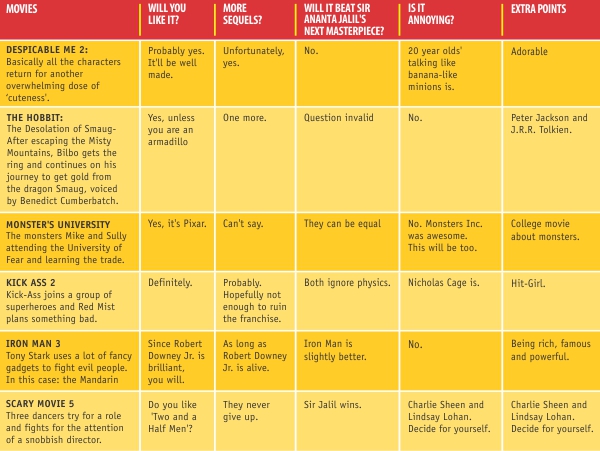

 RSS Feed
RSS Feed